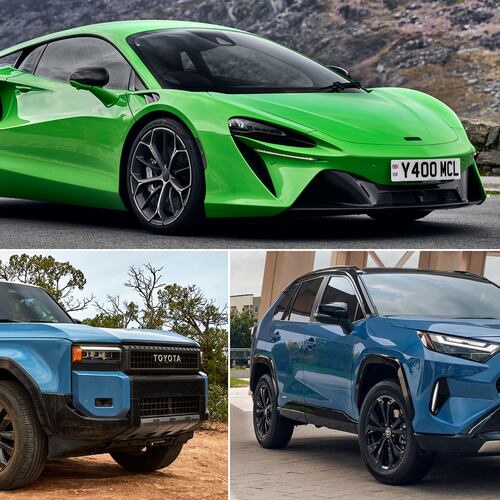In late December, Honda and Nissan shocked the automotive world by announcing they had signed a memorandum of understanding that could see the companies merge by August 2026.
Japanese media reports this week suggest that the deal may be in peril. Nissan may exit the talks over concerns that it might emerge as too subordinate in a final agreement. Neither company has formally ended discussions. The move could be part of a negotiation, or the beginning of the end of talks.
If it happens, the merger could create the world’s third-largest automaker, trailing only Toyota and Volkswagen.
However, it’s not a done deal. In January, I attended a roundtable discussion with Honda global executives at CES, the consumer electronics show in Las Vegas. By my count, the group repeated some version of the phrase “nothing has been decided” at least four times in half an hour.
Credit: SPECIAL
Credit: SPECIAL
Why might two traditional rivals decide to join forces? And what might make them change their minds?
Nissan today
Nissan reported about 3.34 million global car sales in 2024.
North America accounts for more than a third of the company’s total worldwide sales.
Nissan has a full lineup of cars, trucks and SUVs, and it has a more significant pickup truck business than Honda. Nissan was a pioneer in electrification, releasing its Leaf electric vehicle even before the arrival of the Tesla Model S.
Credit: TNS
Credit: TNS
However, the company is now behind in the global electrification race. Notably, it has no hybrid or plug-in hybrid offerings in North America. Hybrid sales have soared in recent years, making this look like a serious miscalculation.
Nissan has faced financial challenges following the COVID-19 pandemic. Sales in North America and China are flagging, and its market capitalization has fallen as low as $10 billion in recent weeks — small for a company of its size.
What Nissan wants from this
Nissan’s sales troubles have led to speculation that the company needs rescue. An executive anonymously told the Financial Times in early December, “We have 12 or 14 months to survive.”
Last year, Oasis Management and Effissimo Capital Management, activist investor groups known for taking over struggling companies, bought small positions in the company. This action worried investors.
Foxconn, a major electronics manufacturer headquartered in Taiwan, reportedly pondered launching an attempt to take over Nissan.
Rumors immediately suggested that Nissan would seek rescue from Honda instead, courting the savior it wants to avoid the saviors it doesn’t want. Even Mitsubishi has considered joining.
Honda today
Honda and Nissan resemble each other in some ways, but Honda is a much healthier company. It is the senior partner in any merger talks with Nissan.
Honda sold about 3.73 million cars globally in 2024, beating Nissan by more than 11%.
Honda’s market capitalization is greater than $50 billion today — nearly five times Nissan’s total.
Of the two companies, Honda appears to be in substantially better health.
What Honda wants from this
With its relative success, why would Honda consider absorbing a troubled rival (or two, counting Mitsubishi)? One explanation is that a merged entity would build economies of scale for a toughening global sales environment.
To hear Honda executives explain it, it’s about sharing costs. Future cars are likely to feature three emerging technologies: electric propulsion, artificial intelligence in the form of virtual assistants, and advanced navigation and automation software that — at least partially — takes over the task of driving. Each technology is expensive to develop.
Noriya Kaihara, director, executive vice president and representative executive officer of Honda Motor Co., told reporters at CES, “Our concentration is on current development of software-defined vehicles, and perhaps developing our own batteries.” Those are costly endeavors, and “it is wise for us to consider collaboration.”
He also noted that Nissan builds full-size trucks and SUVs while Honda does not. Partnering might help Honda move into other market segments, though he stressed “we will not be merging the brands.”
Analysts see another reason for the move.
Chinese automakers are increasingly dominant in the global auto trade.
The Chinese now buy more cars than any other population. China’s economic picture is notoriously opaque. By some measures, the Chinese automotive sector passed Japan’s to become the world’s largest exporter of cars in 2023.
Chinese manufacturing giant BYD likely surpassed Ford and Honda in global sales in 2024.
Combining forces with rivals might give Honda more muscle to survive a global shake-up.
Nothing is guaranteed
A memorandum of understanding doesn’t commit the companies to merge. Honda executives at CES were careful to note that a final merger decision could be months away.
Both companies have other options. Nissan’s picture is cloudy, but its troubles have not proven fatal. Founded in 1933, the company has survived turmoil before. It has a recovery plan, including an aggressive image makeover for its Infiniti luxury division, that could see it save itself.
Should that fail, it has other suitors.
Meanwhile, Honda has a plan to survive the challenge of Chinese competition. The company used its CES appearance to debut two new Honda 0 Series electric vehicles, among the most dramatic new designs I’ve seen in years. It could spark a renaissance at a company that doesn’t even need one.
Still, if the merger happens, it will give Nissan a lifeline and Honda new strength to compete in a rapidly evolving global auto industry.
Sean Tucker reports for Kelley Blue Book from Washington, D.C., where he has covered the auto and energy industries for a quarter-century.
The Steering Column is a weekly consumer auto column from Cox Automotive. Cox Automotive and The Atlanta Journal-Constitution are owned by parent company, Atlanta-based Cox Enterprises.
About the Author
Keep Reading
The Latest
Featured




